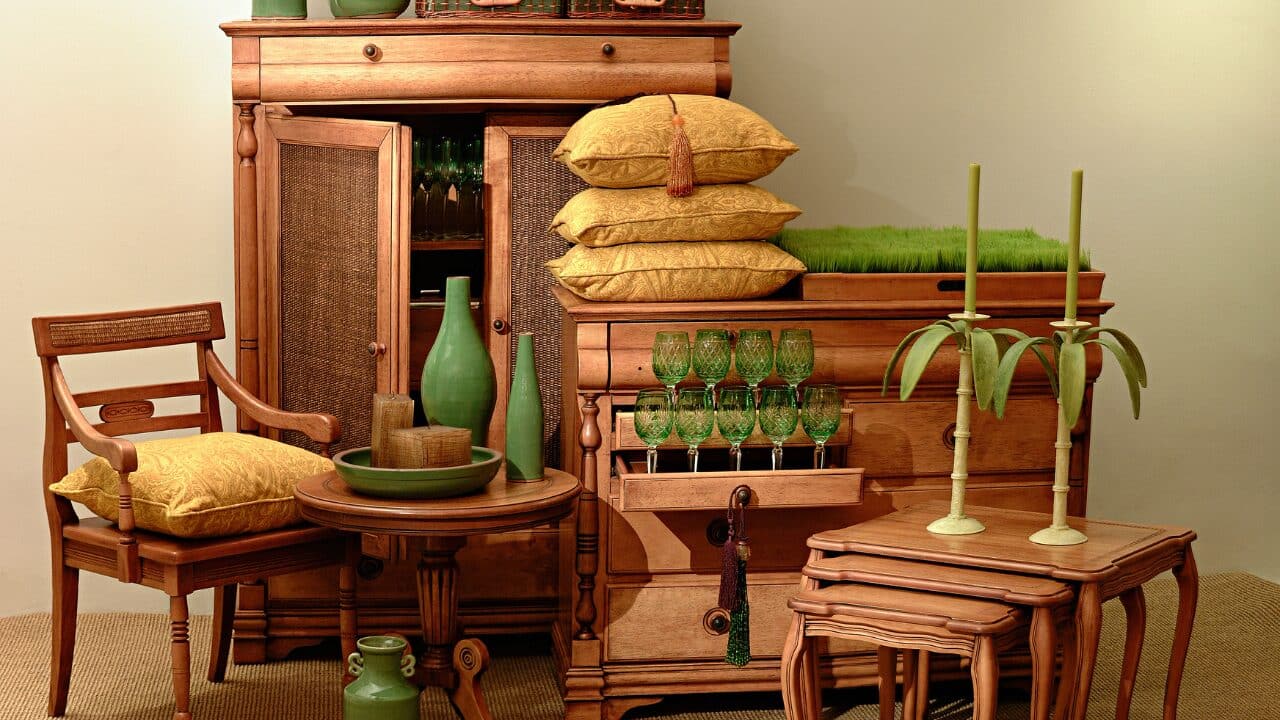Tree sap stains might occur if your outdoor furniture is located near several types of trees. These stains can make your outdoor furniture feel sticky to the touch and make it look less appealing. Sap stains are tough to get rid of with just soap and water.
Fortunately, sap may be removed from outdoor materials with simple, low-cost solutions. Are you happy with the possibility of having to reapply a layer of sealer every few years to keep the sap from pouring out? If it doesn’t appeal to you, it’s possible that simply replacing the afflicted wood will suffice.
Table of Contents
Keep The Cushions And Outdoor Pillows Well-Cleaned
Cleaning outdoor furniture cushions are as simple as rinsing away dirt and stains. Cushions and cushions provide softness and beauty to outdoor furniture, but when exposed to the elements, these plush accessories suffer a lot of wear and tear.
Because outdoor cushions and pillows can collect dirt, debris, mildew, tree sap, bird droppings, and other stains, it’s crucial to know how to clean outdoor cushions and pillows to keep your seating area looking fresh and pleasant.
Things You Need To Know Before Removing Sap From Lawn Furniture
It’s important to remember that crystallized or dry hard sap is the simplest to remove off smooth surfaces like finished wood or metal. Remove the excess resin first, then deal with the remaining sap stain.
Above all, remember to rinse the affected area with clean water or a towel soaked in clean water before air drying to remove any cleaning agent or soap residue. Prepare to deal with tree sap if you want to enjoy the seclusion and tranquility that trees provide in your outdoor environment.
While tree sap might be a pain to remove, it is completely safe and simple to do if you know-how and have the necessary instruments.
Steps to Remove Sap From Lawn Furniture
First, clear all of the sap slowly crystallizing on the top of the damaged wood. Turpentine is ideal for this purpose and will not degrade the wood’s quality. Scrape the oozing resinous components using a gritty plastic sponge, then wipe the wood with a clean towel.
To clean the sap, many individuals will instantly reach for sandpaper. However, keep in mind that it will clog up rapidly. As a result, once you’ve removed the sap, it’s best to use sandpaper to polish the wood’s surface thoroughly.
Use A Blunt Knife To Remove Sap
With a dull knife, scrape off any excess, hardened sap. Soak a portion of a rag in nail polish remover containing acetone, a solvent.
Clean Stains With Polish Remover
Apply the polish remover to the stains and rub it until the sap is softened. Using a clean rag, wipe away the sap. If required, apply more polish remover and wipe again.
Use Mild Dish Soap Or Rubbing Alcohol
To a gallon of water, add a cup of dish soap. Using a nylon bristles scrub brush immersed in soapy water, clean the furniture. Rinse thoroughly, and air dry completely. These ingredients will aid in the drying and subsequent removal of the sticky sap.
Lightly wipe the stain with a small piece of cloth or paper towel soaked in rubbing alcohol. Rubbing it will just exacerbate the condition. If necessary, repeat this procedure. Scrape the resin from the surface after it’s completely dry.
Seal Affected Areas
You can either tint the afflicted area after cleaning the oozing or seal the knots and repaint to stop the sap from seeping out of the wood. When dealing with extremely recalcitrant sap, a sealer is typically used. If you live in a hot, dry climate, sap will flow freely from the wood.
As a result, sealing the knots in the garbage and repainting is a preferable option for you. On the other hand, stretching can be highly effective, but it’s the better option for those of you who live in humid or cold climates.
Use Water And Mild Soap Solution To Clean Cushions
You’re in luck if you have antique furniture. You should be able to eliminate the pollen by spraying your furniture and cushions with a garden hose. Your cushions are made to be easily cleaned and dried.
If your cushions have been exposed to more than pollen, spot clean them with a solution of water and a light natural soap like Ivory. Your cushions will never need to be removed from their covers or washed in a machine.
Use Spray-On Fabric Protectant
Although most outdoor fabrics are coated to repel stains and prevent UV damage, the protective treatment can fade over time. If you prefer to enhance the finish with a spray-on fabric protectant, ensure the fabric is entirely clean of stains and dirt before applying the protectant. Otherwise, the dirt will be sealed in.
Bottom Line
In our outdoor spaces, trees offer unrivaled beauty and serenity. However, most tree kinds provide shade and protection, but they also provide a risk of staining from tree sap. Although these resin stains can be difficult to remove, learning how to remove tree sap from outdoor furniture can make your time outside more joyful and stress-free.
Put the fabric in your freezer for a few minutes to tighten the sap, then scrape it away with a blunt butter knife. Apply a little amount of rubbing alcohol on a moist towel or cotton ball and gently rub the alcohol into the stain.





